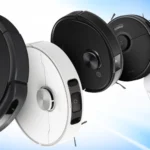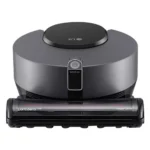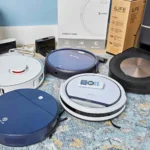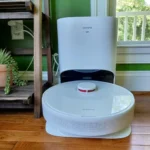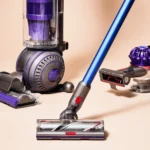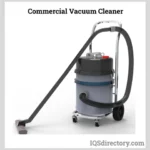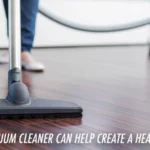Have you been on the hunt for the perfect upright vacuum cleaner, but feel overwhelmed by the multitude of options available? It’s understandable – with so many features to consider, it can be hard to know what to prioritize. Fear not, as we’ve got you covered. In this article, we’ll dive into the top features that you should be on the lookout for when selecting an upright vacuum cleaner. From suction power to maneuverability, we’ll break down everything you need to know to make an informed decision. So, grab a cup of coffee and let’s get started!
Suction Power
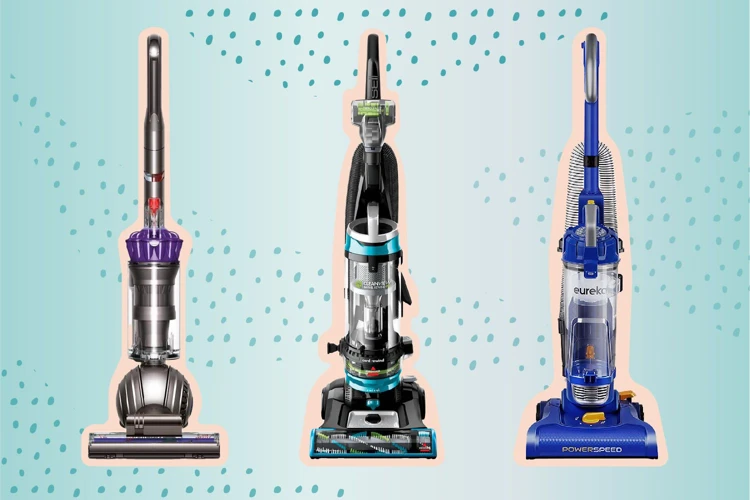
When it comes to finding the perfect upright vacuum cleaner, one of the most important features to consider is suction power. Without adequate suction, a vacuum cleaner simply won’t be able to pick up all the dirt, dust, and debris that accumulates on your floors. The strength of the suction is determined by factors such as the motor power, filter system, and airflow. A vacuum with strong suction power will also make your cleaning process faster and more efficient, saving you time and energy. To learn more about the advantages of upright vacuum cleaners, check out our helpful guide.
Motor Strength
Motor strength is one of the most important features to consider when purchasing an upright vacuum cleaner. The stronger the motor, the better the suction power of the vacuum. This means that the vacuum will be able to pick up dirt, dust, and debris with ease, even on carpets and other surfaces that are difficult to clean.
So, what should you look for when it comes to motor strength?
The first thing to consider is the wattage of the motor. A higher wattage means more power and suction, so look for a vacuum with a motor that has at least 1200 watts. Another important factor is the airflow, which is the amount of air the vacuum can pull in. Vacuums with a high airflow tend to have better suction power, so look for a vacuum with an airflow of at least 60 CFM (cubic feet per minute).
You should also consider the amp rating of the motor. The higher the amp rating, the stronger the motor will be. Look for a vacuum with an amp rating of at least 10 amps. Additionally, the number of motors is something to keep in mind. A dual-motor vacuum will be more powerful than a single motor vacuum, but it will also be heavier and more expensive.
It is important to note that a more powerful motor also means that the vacuum may be louder. If you are sensitive to noise, you may want to look for a vacuum with a lower decibel rating.
To sum up, when looking for an upright vacuum cleaner, pay attention to motor strength. Consider the wattage, airflow, amp rating, and number of motors. Keep in mind that a more powerful motor may mean more noise, so choose accordingly. For more information on upright vacuums, check out our guide to the best upright vacuums for home and our comparison between upright and canister vacuums. If you already own an upright vacuum, don’t forget to read our article on cleaning and replacing filters on your upright vacuum and our maintenance tips to keep it running smoothly. And if you ever run into any issues, our common issues and how to fix them article may be able to help.
Filter System
The Filter System is one of the most essential components of an upright vacuum cleaner. It ensures that the vacuum picks up not only dirt and debris but also allergens and dust particles that can cause allergies and asthma. Here are some key factors to consider when looking at a filter system:
- Type of filter: There are various types of filters such as HEPA filters, foam filters, and felt filters. HEPA filters are the most efficient as they capture up to 99.97% of particles as small as 0.3 microns, while foam and felt filters are washable and reusable, which can save you money in the long run.
- Quality of filter: The quality of the filter material used affects its ability to capture microscopic particles. A high-quality filter will be denser, with more pleats or layers, and will trap more potentially harmful particles.
- Clog-free filter: Some filters tend to get clogged with dirt and debris, reducing the suction power of the vacuum as a result. An upright vacuum with a clog-free filter will maintain its suction power and efficiency even after prolonged use.
It’s important to clean or replace filters regularly to maintain the performance and avoid degradation of the vacuum’s suction power. Some filters are washable, while others need to be replaced every few months. Keep in mind that a dirty filter can also reduce the life of the vacuum cleaner itself.
Investing in a vacuum cleaner with a good filter system is crucial for maintaining good air quality and reducing the spread of allergens and bacteria in your home. Take the time to research and understand the different types of filters and their benefits. It’s worth the effort to ensure that you have the best filter system for your needs.
Airflow
Airflow is an essential factor to consider when purchasing an upright vacuum cleaner. It determines how efficiently the machine can suck up dirt, dust, and debris. The airflow is generally measured in CFM, which stands for cubic feet per minute.
Factors affecting the airflow of the vacuum cleaner include:
| Factor | Description |
|---|---|
| Motor Strength | The higher the motor strength, the greater the suction power, and the better the airflow. Look for a motor with at least 12 amps of power. |
| Filter System | A clogged or dirty filter will restrict the airflow and make the machine less efficient. An effective filter system will ensure that the motor does not suck in dust and debris, which can overheat and cause damage to the vacuum cleaner. |
| Design of the Vacuum Cleaner | An upright vacuum cleaner with a straight suction path tends to have better airflow than those with a curved suction path. A straight path means that there are fewer obstructions in the airflow, making it more efficient. |
| Seals and Gaskets | Seals and gaskets prevent air from escaping the vacuum cleaner and help maintain suction power. Opt for a vacuum cleaner with well-designed seals and gaskets to prevent air leaks. |
To ensure that your vacuum cleaner maintains its suction power, it is essential to clean its filters regularly. This practice will help promote sufficient airflow, which will, in turn, increase the suction power of the vacuum cleaner. Some vacuum cleaners come with washable filters, making them easier to maintain.
The airflow of the vacuum cleaner is a crucial factor to consider. It determines how efficient the machine will be in cleaning your house. Ensure you go for a vacuum cleaner with a powerful motor, an effective filter system, straight suction path, well-designed seals and gaskets, and a washable filter.
Maneuverability
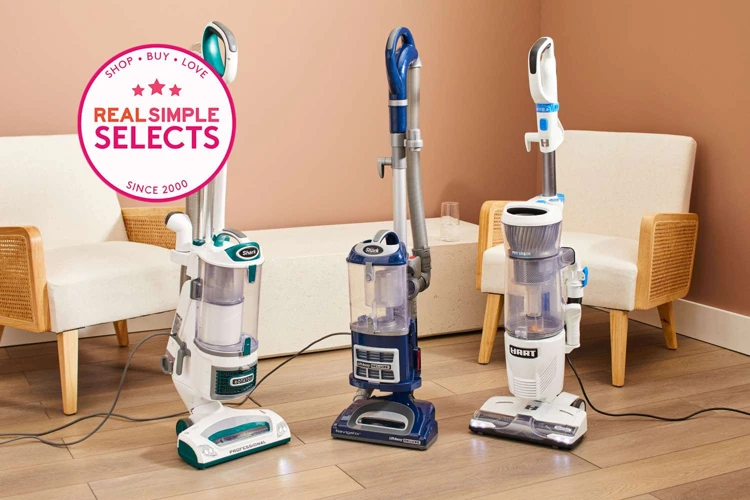
As you search for the perfect upright vacuum cleaner, you’ll soon realize that its maneuverability is a crucial factor. You need a device that can easily move around your home, cleaning every nook and cranny with ease. With so many options available on the market, it can be perplexing to determine what you should look out for. To help you out, we’ve put together a guide on what to consider when it comes to the maneuverability of your upright vacuum cleaner. Let’s dive into some of the key features to keep in mind.
Weight and Size
When it comes to an upright vacuum cleaner, weight and size are crucial factors to consider. You don’t want a machine that is too heavy and cumbersome to carry around your house or apartment. At the same time, however, you also don’t want a cleaner that is too small and lacks the necessary power to clean effectively.
To help you understand why weight and size matter so much when choosing an upright vacuum, let’s explore each factor in detail.
- The weight of the vacuum: A heavy vacuum cleaner can be difficult to maneuver, especially if you have to carry it up and down stairs. It can also be a problem if you have any physical limitations that make it hard to lift heavy objects. An ideal weight for an upright vacuum would be around 10-12 pounds, as this is light enough to move around your home without causing fatigue.
- The size of the vacuum: The size of an upright vacuum cleaner is determined by its dimensions. For example, a vacuum that is too tall may be difficult to push under low-clearance furniture. On the other hand, if it is too short, you may have to bend over to use it. An ideal upright vacuum should be around 45 inches tall, which is a good height for cleaning under most furniture without causing back problems.
So, make sure to consider both the weight and size of an upright vacuum cleaner before making your decision. Look for a machine that is lightweight and easy to move around your home, and one that is a good size for your specific cleaning needs. By doing this, you can ensure that you get a vacuum cleaner that is easy to use and effective at cleaning your floors, carpets, and furniture.
Swivel Head
The Swivel Head is an essential feature of any upright vacuum cleaner, as it allows the user to reach those tight corners and difficult-to-reach areas of the home. This feature refers to the ability of the vacuum head to turn and rotate, making it easier to navigate around furniture, corners, and other obstacles.
When considering the Swivel Head feature, there are a few key factors to keep in mind. The table below highlights these factors, and what to look for when shopping for an upright vacuum cleaner:
| Factor | Description |
| Swivel Angle | Determines how far the vacuum can turn, allowing for maximum maneuverability. |
| Head Height | Some Swivel Heads are adjustable, allowing you to change the height for different floor surfaces. |
| Roller Brush | Some Swivel Heads come with a roller brush, which can help to pick up dirt and debris more effectively. |
| Weight | A heavy Swivel Head can be difficult to maneuver, so it’s important to look for one that is lightweight and easy to handle. |
| Design | Consider the shape of the Swivel Head, and how it will fit into tight spaces and around furniture. |
The Swivel Head is an important factor to consider when shopping for an upright vacuum cleaner. It can make cleaning easier and more efficient, especially in homes with lots of furniture or tight spaces. When choosing a vacuum with this feature, look for a wide swivel angle, adjustable head height, and a lightweight design.
Height Adjustment
Adjusting the height of your vacuum cleaner is crucial for effective cleaning. It allows you to clean different types of flooring and carpets with ease. Here are some factors to consider when looking for a vacuum cleaner with height adjustment feature:
- Multiple height settings: Look for a vacuum cleaner that has multiple height settings. This will make it easier for you to adjust the height of the cleaner to match different flooring and carpets.
- Easy height adjustment: The height adjustment system should be easy to operate so that you can make quick adjustments as you move from room to room. A vacuum cleaner with a complicated height adjustment system is likely to slow you down and affect your cleaning efficiency.
- Automatic height adjustment: Some upright vacuum cleaners come with an automatic height adjustment feature. This feature uses sensors to detect the type of flooring or carpet and adjusts the height of the cleaner accordingly. Although these models may be more expensive, they offer convenience and ease of use.
- Compatibility: Ensure that the vacuum cleaner you choose is compatible with the types of flooring in your home. If you have a mix of carpets, hardwood floors or tiles, choose a vacuum cleaner with adjustable height that can handle all types of flooring.
- No damage to flooring: Your vacuum cleaner should not damage your flooring or carpets. Look for a vacuum cleaner with soft bristles or rubber wheels that do not scratch or damage your flooring.
By choosing a vacuum cleaner with a height adjustment feature, you can clean your floors with ease and achieve the best results without damaging your flooring or carpets. Remember to choose a vacuum cleaner with multiple height settings, easy height adjustment, and compatibility with your flooring types.
Dustbin Capacity
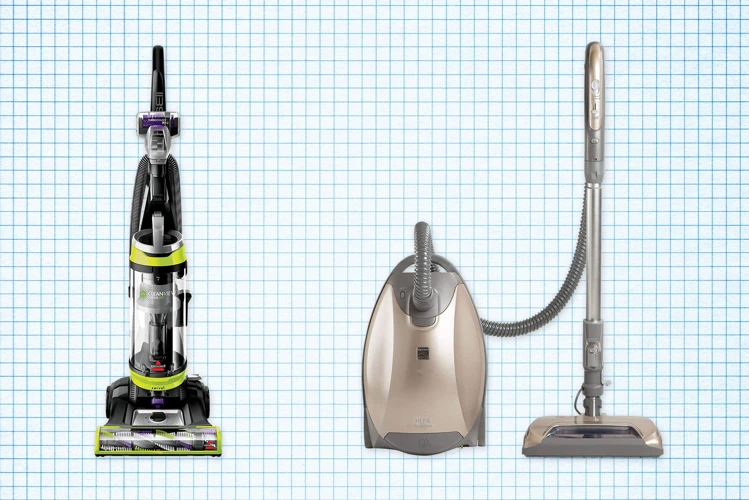
One of the most crucial factors to consider when purchasing an upright vacuum cleaner is its ability to store dirt and debris. After all, no one wants to stop vacuuming halfway through a cleaning session to empty the bin. The capacity of the dustbin can make a huge difference in the cleaning experience, especially for those who have larger homes or pets that shed frequently. With so many options available on the market, it’s essential to know what to look for to ensure that you invest in an upright vacuum cleaner that will meet your needs.
Bagged vs Bagless
When it comes to choosing between bagged and bagless vacuum cleaners, there are a number of factors to consider. Let’s take a closer look at each option and their respective pros and cons.
Bagged Vacuum Cleaners
Bagged vacuums use disposable bags to collect dirt and debris. When the bag is full, it can be easily removed and changed. This type of vacuum typically offers better air filtration as the bag functions as an additional filter. It also means less contact with dust and debris, which can be a good option for those with allergies or respiratory issues. However, the bags need to be replaced regularly, which can be an ongoing expense.
Bagless Vacuum Cleaners
Bagless vacuums, on the other hand, use a dustbin to collect dirt and debris. This means that there are no bags to change, which can be more convenient and cost-effective over time. However, removing and emptying the dustbin can be messy and often requires contact with dust and debris. Additionally, the filters in a bagless vacuum need to be cleaned regularly to maintain optimal performance and avoid clogs.
Factors to Consider
When choosing between bagged and bagless vacuums, it’s important to consider factors such as cleaning frequency, convenience, allergies, and personal preference. Here is a table summarizing the pros and cons of each option:
| Bagged | Bagless | |
|---|---|---|
| Pros | Better air filtration | No ongoing cost for bags |
| Less contact with dust and debris | Convenient to empty | |
| Less frequent filter cleaning | ||
| Cons | Ongoing expense for bags | Regular filter cleaning required |
| Less convenient to change bags | Contact with dust and debris required |
Ultimately, the decision between a bagged and bagless vacuum cleaner comes down to personal preference and individual needs. Be sure to consider all factors and choose the option that will work best for you and your home.
Cleaning Frequency
One important factor to consider when choosing an upright vacuum cleaner is the cleaning frequency. This refers to how often the vacuum needs to be emptied or cleaned to maintain optimal performance. The cleaning frequency will vary depending on the size of the dustbin and whether the vacuum is bagged or bagless.
If you opt for a bagged vacuum, the cleaning frequency will depend on how often you need to replace the bag. This can range from once a month to every few months, depending on the size of the bag and how frequently you use the vacuum. On the other hand, bagless vacuums require more frequent cleaning of the dustbin.
To give you an idea of what to expect, we’ve compiled a table comparing the average cleaning frequency for different types of vacuums:
| Vacuum Type | Cleaning Frequency |
|---|---|
| Bagged | Once a month |
| Bagless | After every use or every other use |
It’s important to note that the cleaning frequency can also depend on the capacity of the dustbin. If you have a larger dustbin, you may be able to go longer without needing to empty it. Additionally, some vacuum models have indicator lights that show when the dustbin is full and needs to be emptied, which can be helpful in determining cleaning frequency.
Ultimately, the cleaning frequency of your vacuum will depend on your specific cleaning needs and habits. If you have pets, for example, you may need to empty the dustbin more frequently to prevent clogs and maintain suction power. It’s important to take this into account when choosing a vacuum and to follow the manufacturer’s recommendations for cleaning and maintenance.
Attachments
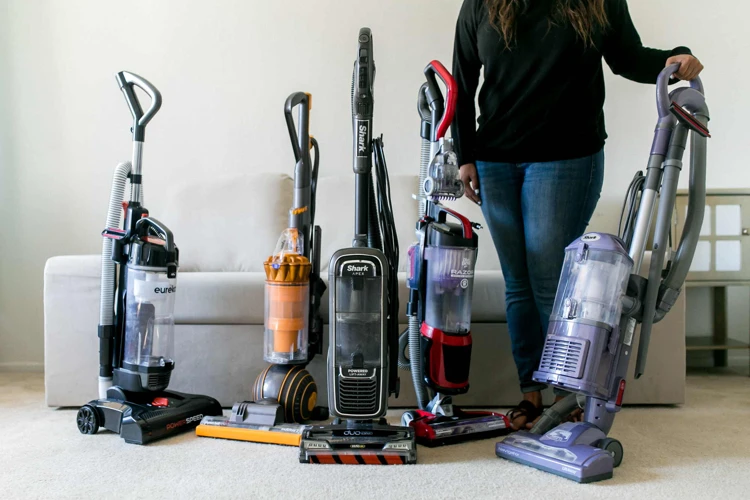
When it comes to choosing an upright vacuum cleaner, it’s not just about the machine itself. The attachments and cleaning tools that come with the vacuum can make a big difference in how effectively you can clean different surfaces and hard-to-reach areas. The right attachments can be a game-changer in making your cleaning tasks easier and more efficient. Here are some of the top features to look for when it comes to attachments.
Cleaning tool kit
When it comes to buying an upright vacuum cleaner, having a good set of cleaning tools can make a huge difference. A comprehensive cleaning tool kit helps to ensure that all the nooks and crannies of your home are covered in the cleaning process. It is important to look for a vacuum cleaner that comes with a diverse set of tools that can handle different cleaning needs.
Crevice tool: A crevice tool helps to clean tight spaces such as baseboards and corners. It can be useful for getting rid of dirt and debris in areas that are difficult to reach.
Dusting brush: A dusting brush can be especially useful for cleaning delicate surfaces such as lampshades, picture frames, and blinds. It can also be used for cleaning furniture, upholstery and carpeted stairs.
Pet hair tool: If you’re a pet owner, then this attachment is a must-have. The pet hair tool is designed to pick up pet hair and dander from furniture, carpets, and upholstery.
Upholstery tool: An upholstery tool is great for cleaning furniture, curtains, mattresses, and car interiors. It can help remove dust, allergens, and pet hair from these surfaces.
Extension wand: An extension wand can help you to reach high ceilings, ceiling fans, and light fixtures. It can also be used to extend the reach of your other cleaning tools.
Another important factor to consider when choosing an upright vacuum cleaner is cord length. A longer cord allows you to move around more freely without having to switch outlets frequently. Cord rewind feature is also useful as it makes the process of packing away the vacuum cleaner easier.
Having a complete set of cleaning tool kit ensures that your upright vacuum cleaner is versatile and can be used for a wide range of cleaning tasks. So, make sure to look for a vacuum cleaner with a good selection of attachments that fit your cleaning needs.
Cord Length
When looking for an upright vacuum cleaner, the cord length is another important factor to consider. A short cord can limit your cleaning radius and be frustrating if you constantly have to switch power outlets while cleaning. You should pay attention to the cord length before purchasing an upright vacuum cleaner.
Ideally, you want a cord length that will give you maximum reach without having to unplug and plug it from one socket to the other. A cord length of around 30 feet is usually sufficient for most homes. However, if you have a large home or a lot of floor space to cover, you may want to opt for an upright vacuum cleaner with a longer cord.
The cord storage feature is also worth considering. Some upright vacuum cleaners come with cord rewind feature, which allows the cord to be rewound automatically into the vacuum cleaner after use. This can help prevent the cord from getting tangled or causing tripping hazards.
To summarize, when considering cord length on an upright vacuum cleaner, look for the following features:
- A cord length of around 30 feet for maximum reach
- Cord rewind feature for easy cord storage and preventing tripping hazards
By paying attention to the cord length and storage features on your upright vacuum cleaner, you can ensure that your cleaning tasks are easy, convenient and hassle-free.
Cord Rewind Feature
One feature to look for in an upright vacuum cleaner is the cord rewind feature. This is especially convenient because it saves you from having to manually wrap the cord around the machine every time you’re done cleaning. Not all vacuum cleaners come with this feature, so make sure to look for it when shopping for one.
Advantages of Cord Rewind Feature
One of the biggest benefits of a cord rewind feature is that it saves you time and effort. With just a push of a button, the vacuum will automatically retract the cord for you, making it quicker to put away. Another advantage is that it can help prevent the cord from tangling, which can prolong the life of the cord and the vacuum.
Things to Consider
When choosing an upright vacuum cleaner with cord rewind feature, there are a few things to keep in mind. Firstly, check the length of the cord. A longer cord will give you more flexibility in cleaning larger areas without having to stop and switch outlets. Secondly, make sure the cord rewind mechanism is sturdy and reliable. The last thing you want is for the cord to get stuck halfway through rewinding. Lastly, consider the noise level of the cord rewind feature. Some models can be quite noisy, which can be a nuisance if you’re vacuuming early in the morning or late at night.
To help you find the perfect upright vacuum cleaner with cord rewind feature, we’ve created a table below highlighting some of the top models on the market:
| Model | Cord Length | Cord Rewind | Noise Level |
|---|---|---|---|
| Dyson Cyclone V10 Absolute | 60 feet | Yes | 82 decibels |
| Shark Navigator Lift-Away Professional | 25 feet | Yes | 68 decibels |
| Bissell CleanView Plus | 27 feet | Yes | 78 decibels |
As you can see, all of these models come with the cord rewind feature, but they vary in cord length and noise level. Choose the one that best fits your needs and preferences.
Noise Level
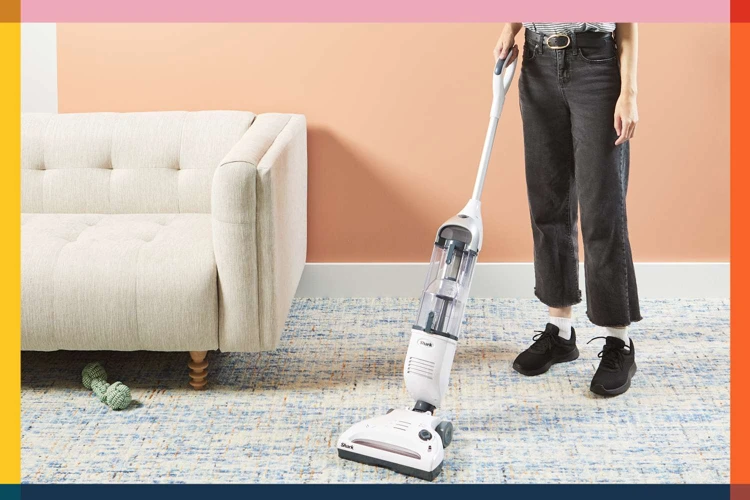
When it comes to purchasing an upright vacuum cleaner, noise level is an important factor to consider. It may not directly affect the performance of the vacuum, but a loud machine can be unpleasant for the user and disruptive for others in the household, especially if you have pets or small children who can be frightened by loud noises.
A noisy vacuum cleaner can make cleaning your home an exhausting task, and the constant sound can even cause hearing damage over time. It’s essential to pay attention to the decibel (dB) rating of the vacuum cleaner you’re interested in.
Some vacuum cleaners produce over 85 dB, which can be as loud as a blender or a garbage disposal unit. On the other hand, some modern models are designed to operate at as low as 60 dB, which is quiet enough not to disturb anyone while you’re cleaning.
There are several ways to reduce the noise level of an upright vacuum cleaner. One way is to look for models that come with noise-reducing features, such as insulated motors, sound-absorbing materials in the canister or dustbin, and rubber wheels that reduce vibrations and dampen sounds.
Another way to minimize noise is to opt for a cordless vacuum cleaner, which tends to be quieter since they don’t use a motorized brush roll. These models are typically battery-powered and are much quieter than their corded counterparts.
So, if you’re looking for a vacuum cleaner that won’t make a lot of noise, make sure to check the dB rating and look for models with noise-reducing features. Keep in mind that while a quieter vacuum might come at a higher price, the benefits of keeping noise levels down can make the investment worthwhile.
Price and Warranty
As important as the performance and features of an upright vacuum cleaner are, the price and warranty of the product also play a crucial role in the decision-making process. The cost and guarantee of the vacuum cleaner will determine its value for money and the level of trust a consumer has in the brand. It’s essential to strike a balance between the initial investment and the long-term benefits of a reliable and durable upright vacuum cleaner. Let’s take a closer look at the significance of the price and warranty when choosing your ideal cleaning companion.
Value for Money
When considering the value for money aspect of an upright vacuum cleaner, it’s essential to weigh in on the features, performance, durability, and the price you’re willing to pay.
A high-priced vacuum cleaner doesn’t always guarantee high-quality performance, and conversely, a cheaper one might have a limited lifespan or lack necessary features. Hence, it’s imperative to strike the right balance in terms of the price and features offered.
Here’s a table that illustrates some popular upright vacuum models and their price ranges, highlighting the most exemplary feature offered by each model and the price at which it is sold.
| Brand/Model | Price Range | Important Feature |
|---|---|---|
| Dyson Ball Animal 2 | $399 – $599 | Powerful suction and advanced cyclone technology |
| Shark Navigator Lift-Away Professional | $179 – $269 | Lift-away canister and brushroll shutoff button-based |
| Bissell CleanView Swivel Rewind Pet Upright | $109 – $159 | Triple action brush roll and Swivel Steering |
| HOOVER WindTunnel 3 High Performance Pet Bagless Corded Upright Vacuum | $139 – $189 | High-performance suction and multi-floor brush roll |
As you can see from the table above, there is a fair amount of variety in terms of price and features. It’s essential to compare models and assess the features that you find the most necessary for your household cleaning needs.
Always remember to prioritize the optimal performance capabilities of a vacuum cleaner and not just its price. A quality vacuum cleaner can be considered an investment that helps maintain the cleanliness and hygiene of your home, making it a worthwhile expenditure in the long run.
Warranty Length
When it comes to investing in an upright vacuum cleaner, it’s important to consider the warranty length in addition to the upfront cost. A strong warranty can provide peace of mind and protect your investment in case of any issues with the machine. Here are some things to keep in mind when evaluating the warranty length of a potential vacuum cleaner purchase:
| Brand | Warranty Length | Features Covered |
|---|---|---|
| Shark | 5 years | Parts and labor |
| Dyson | 5 years | Parts and labor |
| Bissell | 3-5 years | Varies by model, typically parts and motor |
| Hoover | 1-5 years | Varies by model, typically motor and parts |
As you can see, warranty lengths can vary widely depending on the brand and model of the vacuum cleaner. It’s important to carefully read the warranty information provided by the manufacturer to understand what is covered and for how long. Some brands may offer longer warranties for certain parts of the vacuum, such as the motor, while others may only warrant against defects in parts or workmanship.
When evaluating the warranty length of a vacuum cleaner, it’s also important to consider the expected lifespan of the machine. A vacuum cleaner that is designed to last for many years may require a longer warranty to protect against any issues that may arise over time. In contrast, a lower-cost vacuum cleaner may have a shorter warranty but may still provide good value for its price point.
Ultimately, the warranty length is just one factor to consider when evaluating the potential value of an upright vacuum cleaner. However, it can provide important protection and peace of mind, especially for those who plan to use their vacuum cleaner frequently or for many years to come.
Conclusion
After thoroughly researching and analyzing the key features of upright vacuum cleaners, we can draw several conclusions that can aid buyers in making their purchase decision.
Firstly, suction power is undoubtedly the most important factor to consider when choosing an upright vacuum cleaner. A strong motor, advanced filter system, and proper airflow all contribute to the suction power of a vacuum. Investing in a high-quality machine with a powerful suction is worth it, as it will ensure that even the most deeply embedded dirt and debris are removed from your carpets and floors.
Secondly, maneuverability is another crucial aspect to look for in an upright vacuum cleaner. The weight, size, swivel head, and height adjustment all can impact your vacuum’s maneuverability. A vacuum with proper maneuverability allows you to reach and clean even the most challenging areas where dirt and debris live.
Moreover, dustbin capacity is an essential component to consider. Bagged vacuums have a limited capacity that requires regular disposal. In comparison, bagless vacuums provide more substantial space for vacuuming, minimizing the need for frequent emptying. It all depends on your specific requirements and cleaning frequency.
To make the most of your vacuum cleaner, attachments are a bonus feature that can enhance your cleaning experience. Different attachments may include crevice tools, dusting brushes, pet hair removers, and extension wands. Long cord length and cord rewind features can also ensure you have enough length to cover any room and store your vacuum easily.
Last but not least, noise level, price, and warranty are all crucial factors to consider when buying an upright vacuum cleaner. Different vacuums come with different noise levels, so it’s essential to choose one that meets your comfort level. While price plays a crucial role, considering the features and warranty that come along will impact the vacuum’s value for money. It’s essential to evaluate the warranty conditions before making a purchase.
In conclusion, finding the perfect upright vacuum cleaner requires careful consideration of its suction power, maneuverability, dustbin capacity, attachments as well as price and warranty. Always ensure that you choose a vacuum cleaner that meets your needs, preferences, budget, and is durable to serve you for years to come.
Frequently Asked Questions
What is the ideal suction power for a vacuum cleaner?
The ideal suction power for a vacuum cleaner is around 100 AW (airwatts) or more, as this provides sufficient suction power to pick up dust, dirt, and debris.
What is the difference between a bagged and a bagless vacuum cleaner?
A bagged vacuum cleaner uses a disposable bag to collect dust and debris, while a bagless vacuum cleaner uses a bin or canister that can be emptied and reused.
What is a HEPA filter?
A HEPA filter is a high-efficiency particulate air filter that can capture small particles such as dust, pollen, and pet dander, making it ideal for people with allergies or asthma.
What is the benefit of a swivel head in a vacuum cleaner?
A swivel head allows the vacuum cleaner to easily navigate around furniture, corners, and other obstacles, making it easier to clean hard-to-reach areas.
What is the importance of a long cord in a vacuum cleaner?
A long cord allows you to clean a larger area without having to constantly switch outlets, making the vacuuming process more efficient.
What is the recommended cleaning frequency for a vacuum cleaner?
The recommended cleaning frequency for a vacuum cleaner depends on the amount of foot traffic in your home. For high-traffic areas, it is recommended to vacuum daily or every other day, while for low-traffic areas, once or twice a week is sufficient.
What is the benefit of a cord rewind feature in a vacuum cleaner?
A cord rewind feature allows you to quickly and easily retract the cord, making storage and transportation of the vacuum cleaner more convenient.
What is the average noise level for a vacuum cleaner?
The average noise level for a vacuum cleaner is around 70 decibels, which is equivalent to the sound of a normal conversation. However, some vacuum cleaners may produce louder or quieter noise levels.
What is the average warranty length for a vacuum cleaner?
The average warranty length for a vacuum cleaner is around 1-3 years, although some brands may offer longer or shorter warranties.
What is the benefit of a cleaning tool kit in a vacuum cleaner?
A cleaning tool kit provides you with a variety of attachments, such as a crevice tool, upholstery tool, and dusting brush, allowing you to clean different surfaces and areas with ease.

